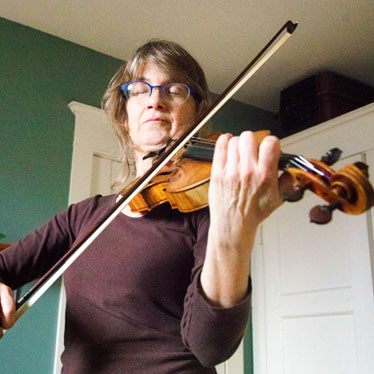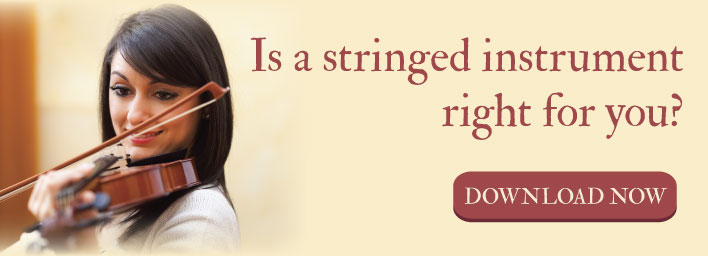8 Techniques for Teaching Adult Learners the Violin

For many teachers, adult students are the calm in the teaching storm. What a treat it is to spend time teaching students who are eager and willing to learn because their interest in the violin is entirely self-generated.
On the flip-side, there are things about adult music students that might surprise you. Being prepared by equipping your music instructor “toolbox” with helpful techniques and tricks, eases the way.
1. Maintain a lenient attitude
It’s true that adult violin students are often more self-motivated than their youthful counterparts, but it’s also true that adult life demands are more intense. As a result, adult students may need to cancel more often due to family or work obligations. They may run late as a result of their work schedule, and they probably won’t have as much time to practice as they (or you) would like.
Make your cancellation payment policy 100% transparent from the get-go if this is a concern for you, and then adopt a lenient attitude, so you don’t become like a parent – to a parent. Sometimes, adults treat their private music lessons as supervised rehearsals, benefiting from simultaneous feedback from a pro. If that’s their intention, then so be it.
2. Set goals together
Goal-setting is always essential for music students, but setting a clear outline for collaboratively created goals can improve the quality of your lessons. Adults are more self-aware and often prefer following a defined set of objectives because it’s easy to track and makes practice and rehearsal time more productive.
3. Consider adding their child into the mix
Sometimes, parents become inspired to play an instrument because their child has taken up an instrument. What a great way to model that music can be a lifelong passion and that it’s never too late to try something new. If budgeting or time constraints are an issue for a parent, consider offering to teach parent and child(ren) together using differentiated techniques the way you do with your student orchestra players.
4. Playing may not (always) be the main objective
While the desire to play led the adult student through your door, you may find that these sessions are more about them finding some relaxing and stress-relieving downtime than it is about playing their violin. S/he may want to spend more time debriefing at the end of their workday, listening to your instructions, watching you play, or even hearing prospective violin pieces that they want to learn later.
Allow some downtime accordingly, and perhaps use non-instrument-based techniques. These can be visualizations, pre-performance anxiety soothers, or practice techniques for when they don’t have an instrument with them in order to allow the space they need.
5. Provide spacious awareness of the “beginner’s mind”
It is not easy for adults to try something new, and they can be unimaginably critical and unkind to themselves when they don’t pick things up as fast as they think they should. Plus, the adult student feels painfully self-conscious under the watchful gaze of his/her adult (peer) instructor.
Cultivate a “beginner’s mind” culture – always patient and compassionate – gently reminding students that it takes a long time to learn a new skill, as well as an infinite number of mistakes, to become proficient.
6. Step back into student mode again
One of the best things you can do to create an authentic culture of spacious compassion is to be a student again yourself. Is there something you’ve always wanted to learn how to do? Take a class and put yourself in your students’ shoes. Or, consider taking a masterclass – a one-track-journey towards honing your playing and performance skills while being simultaneously humbled under the tutelage of one of the greats. Sitting in the student seat will make you a better teacher.
7. Be prepared to let go of the controls
If you’ve taught young students for any length of time, odds are you’ve created a series of lesson plans that you have shaped based on what has worked in the past. This works well for children who are used to being told what to do by adults.
Adults are a different story. They may come in ready to step on your adult-tailored lesson plans, Or, they may have their own agenda. Your student may insist on learning a particular song measure by measure – ditching scales altogether. You may find yourself being steered along the path, rather than the other way around. Take a deep breath and release a little control.
8. Hold a musical reception or soiree, rather than a recital
Finally, adult students deserve to show off their newfound musical prowess – or progress – as much as children do, but performing at a child-centric recital can feel awkward and embarrassing. Instead, join forces with other music teachers in your area and hold an adult-friendly, musical soiree – complete with hors d'oeuvres, wine and beer, and fancy dress. In this way, adults get to showcase their talents with adult-student peers, in a format that is geared entirely for adults and their family audience.
Developing your reputation as the go-to violin teacher for adults is a smart way to capitalize on an under marketed niche, and can be a much-needed shift from the standard 17 and under crowd.
Sponsored by Thomastik-Infeld


